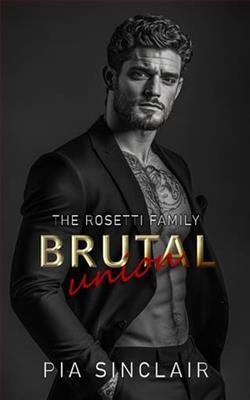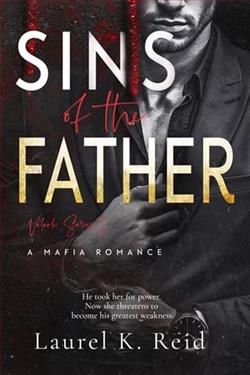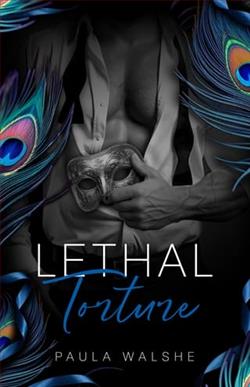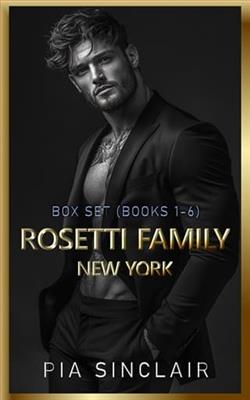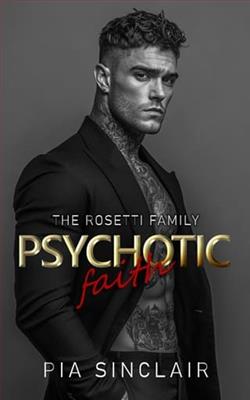Page 1 of The Hawk Laird
Prologue
Scotland, the Lowlands
February 1305
Aflash oflight, then darkness as the vision began. Isobel, through closed eyes, saw a man emerge from the shadows. Tall, wide-shouldered, cloaked like a pilgrim, he moved with the easy grace of a warrior. On his gloved fist, he supported a hawk. Mist whirled, and he was gone. She frowned at the haunting image; she did not know the man.
“Isobel?” Her father’s voice was hushed. John Seton’s only child, the heiress to his castle at Aberlady, waited silently for another vision to appear. “Tell me what you see.”
She shook her head. Had she opened her eyes, she would not have seen the bowl on the table and the gleaming water surface that sparked visions for her. Nor would she have seen the stone walls of the chamber, the fire in the hearth, or the three men watching her intently. She was blind.
The prophetic visions usually took her earthly sight for a little while, hours or a day, sometimes more. She relied on sheer faith for her sight to return. So far, it had.
More images formed, faces and scenes, and the words came. “Treachery. Murder.”
The men whispered to each other—her father, her priest, her betrothed. “What sort of treachery, Isobel?” her father asked.
“What do you see, Isobel?” Sir Ralph Leslie—her father’s choice for her husband, and her father’s friend—had a pleasantvoice. He moved heavily, short but powerfully built. She could hear the hawk that he had brought with him chirring on a perch in a corner of the room.
“Stay back, Ralph,” John Seton murmured. “Let Father Hugh and I question her. And keep your hawk quiet. That bird has a poor temper.”
Isobel listened, eyes closed. She had been betrothed to Leslie at Whitsunday; this was the first time Sir Ralph had witnessed her speaking prophecy. She vaguely realized he was not sure how to behave during the session. Truly, she had not wanted him present—had wanted the betrothal even less—but her father and the priest had decided, as they often did, for her.
Her eyes rolled under closed lids as she let her own thoughts go and focused on the rapid images crossing the dark field of her inner vision. “I see an eagle flying over Scottish hills,” she said. “Hawks pursue the eagle,” she continued. Her visions often blended real and symbolic, and a sudden understanding came to her.
“The eagle represents a man,” she said. “And the hawks are men—hawk of the tower, hawk of the forest, and others. English and Scots both, come to take the eagle, that man, in treachery. He is a leader they fear and would stop.” She heard a hawk call out—kee, kee, kee-eer—in the vision.
“Gray goshawk on a gloved fist,” she described. “Its master led other men here. Hawk of the tower, hawk of the forest. The eagle is trapped in the dark of night. He struggles, though strong in body and heart.”
She watched as a huge man resisted while others dragged him away. “They accuse him of crimes. They will kill him. Sacrifice. Murder. They take him away.” She saw the man hauled off on horseback. “An arrow. Hawk of the forest loses a white feather. He flees into the greenwood.”
“What of the eagle?” her father asked.
Isobel sucked in a breath against images of cruelty. “His great heart is torn from his breast.” She gasped against the disturbing vision. “The English lion claims triumph. The hawk betrayed the eagle, though they were friends. The hawk vanishes into the forest.”
“The English lion—King Edward,” Father Hugh murmured, his quill scratching over parchment. “Who are the eagle, the hawk of the tower, the hawk of the forest?”
She did not know. She felt sad, a terrible sense of betrayal. The strong, brave man—the eagle—would die before autumn.
And suddenly she knew who he was.Dear Lord,she thought,let me warn him. For once, let me help, not just foretell. Let me remember. Please let me remember this one.
Usually she forgot her visions, and her father and the priest did not often tell her all that she said. They told her not to worry, they would take care of everything. But she wanted to know what she prophesied. She had begun to foretell events as a young girl, and it had frightened her so that her father had become protective of her. But now she was a woman and no longer content to let others have control over her visions.
A few years ago, the priest had talked of her predictions, and word had spread in the parish and beyond. He then wrote to the exiled king of Scotland, John Balliol, and to the men who acted as the Guardians of the Realm of Scotland. The English had heard of her prophecies, too.
Her father and the priest told her she could help the cause of Scotland, and she was glad of that. The visions, and the price she paid for them, seemed worthwhile if the Scots benefitted.
“Isobel, who is the eagle, the man taken?” Father Hugh brought her back to the moment.
“The rebel leader William Wallace.” She felt sure of it. “The English king will butcher the freedom fighter to appease hisanger,” she continued. “He will call it righteous justice. Wallace is an eagle among hawks, and he will be betrayed by a hawk.”
She heard Sir Ralph murmur to her father. “Go on, Isobel,” John Seton urged.
Eyes closed, she saw a lovely scene, a goshawk flying above a dense forest. “Hawk of the forest. He is laird of the wind. Laird of hawks. Laird of freedom,” she said spontaneously. She loved the bird’s freedom in the vision.
“Who is he?” her father and the priest asked together.
“He has no home, lives in the forest, flies free.” She saw the hawk soar, then frowned at what came to her next. “Others hunt him. He flees for his life.” She twisted her fingers together. “He betrayed. Not willing—now he is betrayed. Oh, treachery!” She gasped in anguish.








